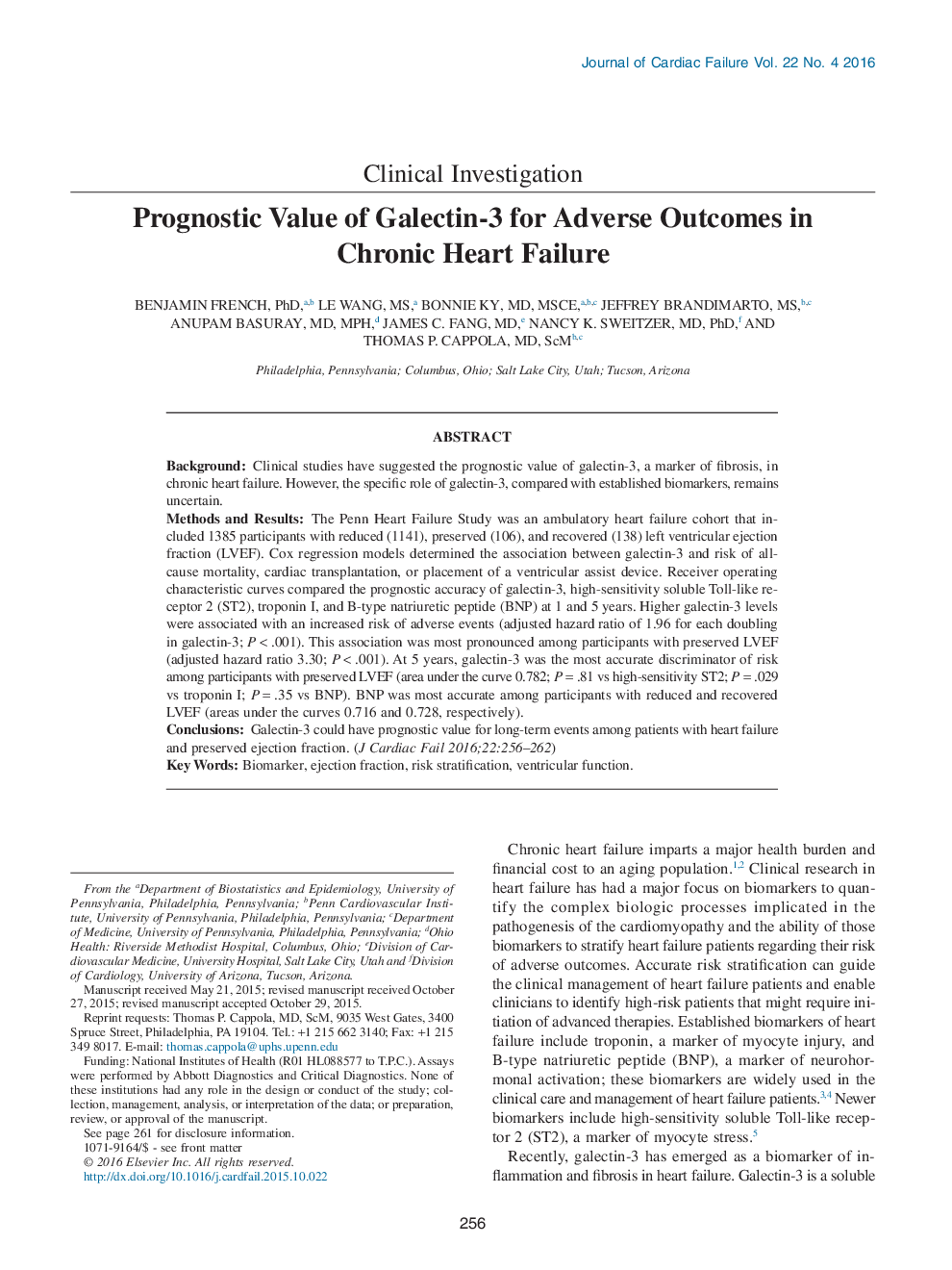| Article ID | Journal | Published Year | Pages | File Type |
|---|---|---|---|---|
| 2958574 | Journal of Cardiac Failure | 2016 | 7 Pages |
•Age, symptoms of heart failure, and renal function affected galectin-3 levels.•Galectin-3 was strongly associated with adverse terminal outcomes in heart failure.•Compared with established biomarkers, galectin-3 discriminated risk less accurately.•Among patients with preserved ejection fraction, galectin-3 had high accuracy.
BackgroundClinical studies have suggested the prognostic value of galectin-3, a marker of fibrosis, in chronic heart failure. However, the specific role of galectin-3, compared with established biomarkers, remains uncertain.Methods and ResultsThe Penn Heart Failure Study was an ambulatory heart failure cohort that included 1385 participants with reduced (1141), preserved (106), and recovered (138) left ventricular ejection fraction (LVEF). Cox regression models determined the association between galectin-3 and risk of all-cause mortality, cardiac transplantation, or placement of a ventricular assist device. Receiver operating characteristic curves compared the prognostic accuracy of galectin-3, high-sensitivity soluble Toll-like receptor 2 (ST2), troponin I, and B-type natriuretic peptide (BNP) at 1 and 5 years. Higher galectin-3 levels were associated with an increased risk of adverse events (adjusted hazard ratio of 1.96 for each doubling in galectin-3; P < .001). This association was most pronounced among participants with preserved LVEF (adjusted hazard ratio 3.30; P < .001). At 5 years, galectin-3 was the most accurate discriminator of risk among participants with preserved LVEF (area under the curve 0.782; P = .81 vs high-sensitivity ST2; P = .029 vs troponin I; P = .35 vs BNP). BNP was most accurate among participants with reduced and recovered LVEF (areas under the curves 0.716 and 0.728, respectively).ConclusionsGalectin-3 could have prognostic value for long-term events among patients with heart failure and preserved ejection fraction.
